Shantiniketan or “The Abode of Peace” had been on our bucket list for a very long time. Shantiniketan in West Bengal draws tourists from across the globe. We are frequenters in Kolkata and have visited the beautiful terracotta temples of Bishnupur and the frolicky beach at Digha. But last winter we made a trip to Kolkata especially to visit Shantiniketan and get a feel of its fame.
Contents
What is Shantiniketan famous for?

Contrary to popular misconception, Shantiniketan is not the birthplace of Gurudev Rabindranath Tagore. He was born here at Jorasanko, Kolkata, and came to Shantiniketan as a child with his father Maharshi Debendranath Tagore. Many years later, Rabindranath established Visva-Bharati University here. The university was set to create an open environment stoking creativity and freedom of thought among the students. So much so, classes were and still are held in the open campus under the shade of the huge trees on the campus. The university became an excellent institution for the study of music, arts, and languages and would draw students and academicians not only from various corners of India but across the globe. India’s first prime minister Pandit Jawaharlal Nehru was very impressed with Visva-Bharati and admitted his daughter, later Prime Minister Indira Gandhi, as a student here. While a lot has changed in the University since Tagore’s times, Visva-Bharati is still a sought-after destination for students of music and art. Some parts of Visva-Bharati are open to visitors.
Pin it for later Read
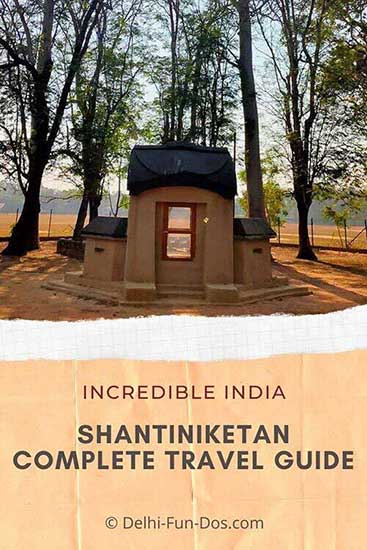
Visva-Bharati means the unity of the world with India. Tagore had travelled across the globe and introduced various forms of music and art from foreign shores in Visva-Bharati. Batik is one such art form Tagore got from Indonesia to India. Such art-styles were nurtured by the artists of Visva-Bharati and developed a new narrative that was unique in style from its origin. Local skills were also utilized in the process. Shantiniketan is now famous for such art and craft that is endemic to this region and one can get a glimpse at the weekend flea market “Khoai Haat“.
The Uttarayan Complex at the heart of the university zone is an agglomeration of buildings where Tagore resided after establishing Shantiniketan. Amidst lush greenery and beautiful gardens, these houses are reflective of various architectural influences from around the globe and draw scholars and art enthusiast.
How to reach Shantiniketan?
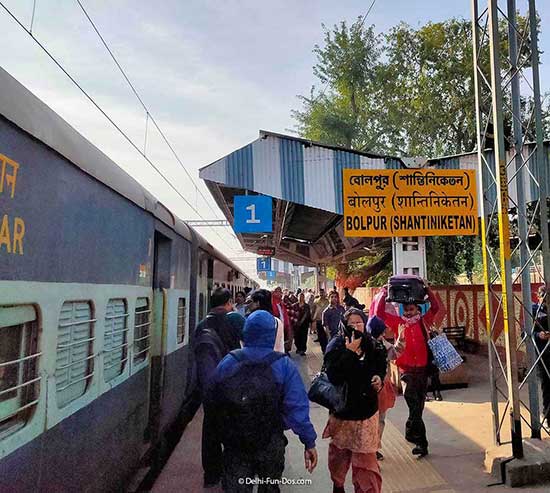
Shantiniketan is part of Bolpur town in the Birbhum district of West Bengal. This is about 160 km from Kolkata and is connected via excellent roads. If you are driving or taking a cab or a tourist bus, it should comfortably take you 2 and a half hours. It takes as much time in a train as well, and we prefer trains since we can see the beautiful scenery with paddy fields, palm trees, and bamboo and mango groves that starts soon after the train is out of city limits. Moreover, there are many trains from early morning till late at night. You can take Ganadevta Express early in the morning, Shantiniketan Express in the day or Viswabharati Fast Passenger in the evening. These are mostly punctual and, in our opinion, the best trains for Shantiniketan. These trains would drop you at Bolpur and Shantiniketan area is about 20 minutes on a rickshaw. There is a separate Shantikinetan railway station but not too many trains stop here.
Where to stay in Shantiniketan?
There is no dearth of accommodation in Shantiniketan near the Visva-Bharati area or at Bolpur. From affordable to fancy, you are spoilt by choice in terms of hotels, resorts, and homestays. West Bengal government-run Bolpur Tourist Lodge is a good option, although that is booked way ahead given its popularity. If you are willing to veer some distance away from Shantiniketan you come across the most beautiful eco-resorts that are experienced on their own. But these places work only if you have your transport.
What to see at Shantiniketan?
Uttarayan Complex
Uttarayan is an agglomeration of buildings nearby. Tagore built these houses in his bid to experiment with various forms of architecture. The houses Udayan, Konarka, Shyamali, Punashcha, and Udichi are unique from each other, reflect strong Indonesian as well as local styles, and carry exquisite furniture and artwork that Tagore collected. Most of the houses are made of concrete except Shayamali which is a mud house in local style with the gate resembling a Chaitya that we saw in Ajanta caves. Paved paths, beautiful gardens, and some pieces of sculpture that have been placed recently complete the area.

The Uttarayan Complex also houses a Tagore museum in Bichitra Bhavan. The museum has been renovated recently and shows Tagore’s eclectic journey through life. It also has a replica of the Nobel Prize that Tagore received, the first Asian to win this award.
Upasana Griha
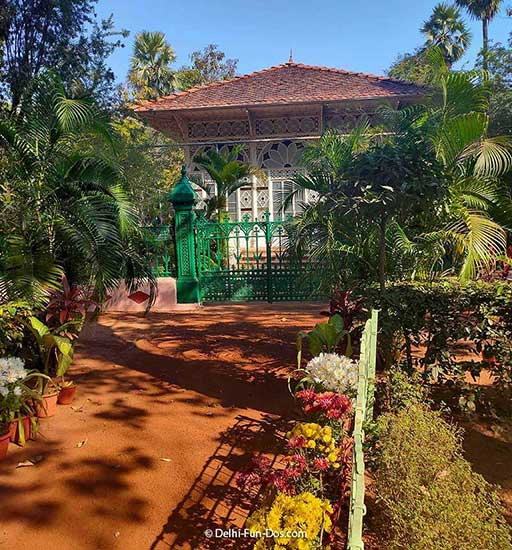
This is a prayer hall that Tagore established for Upanishadic and Brahmo services. Built with beautiful white and coloured Belgian glass, it is also called “Knacher Ghar” or the Glass Room. During evening services, the hall and its surroundings are decorated with flickering candles and it looks like some little castle in a fairyland.
Shantiniketan Bhavan
This is an imposing structure, the first construction in the area. Built by Maharshi Debendranath, this house is now a museum carrying paintings and chronological trees of the Tagore family.
Visva-Bharati University campus
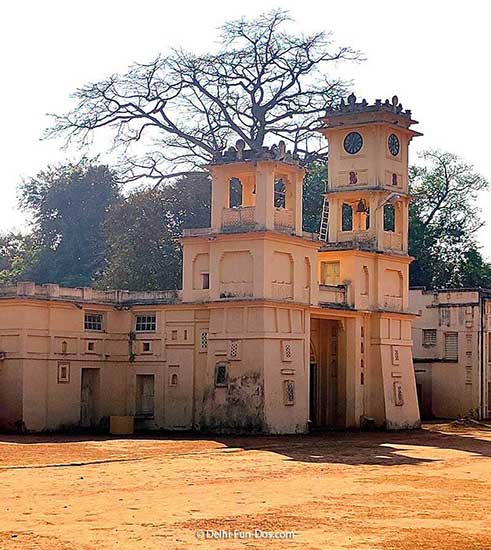
Visitors can enter the campus area after school hours. The campus is dotted with artistic buildings and beautiful pieces of art and sculpture. A clock tower against an open ground takes us to a manor in England. Enchanting paintings by the renowned Shilpa Guru Nandalal Bose adorn the walls of some administrative buildings.
Kala Bhavan
Kala Bhavan is the fine arts department of Visva-Bharati. The buildings here are adorned with breathtaking murals and frescoes. A mud-house painted with coal tar is decorated with relief work by the eminent artist Nandalal Bose and students of the fine arts department.
Ramkinkar Baij sculptures
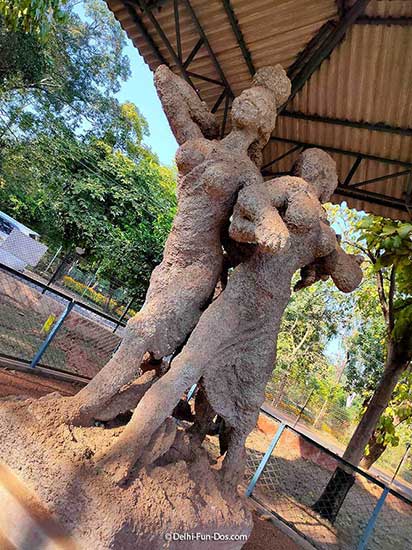
Ramkinkar Baij was a pioneer of modern Indian sculpture. He was trained in Visva-Bharati and his artworks are placed at various strategic points. Do look out for the Buddha – Sujata, and the huge Gandhiji statue inside the campus. Outside Kala Bhavan, visible from the main road are two of his most famous works “Koler Bnashi” (The Factory Siren) and “Saontal Paribar” (The Santhal Family). The strong artistic language on these pieces gave us goosebumps.
What to do at Shantiniketan?
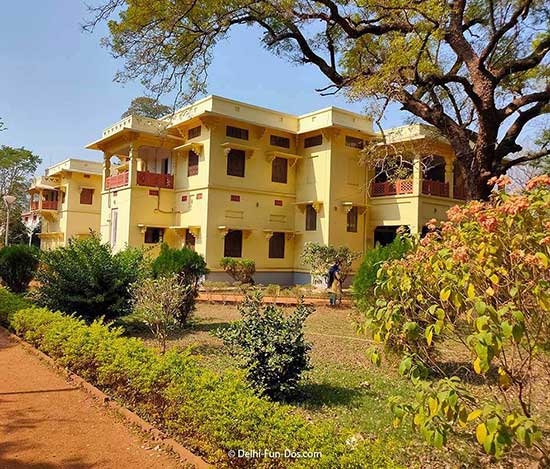
Visiting the Visva-Bharati campus and Tagore Museum is the primary activity here. But Shantiniketan is naturally endowed with bountiful greenery against the sharp contrast of the red colour of the laterite soil of this region. If you are here in spring, Palash or flame of the forest flowers brighten the surroundings. The river Kopai runs close by and the river bank is a great place to spend some self-time. One can take long walks below the star-lit sky of Shantiniketan. Alternatively, these places are a short rickshaw ride from the Visva-Bharati campus and you can look around sitting on a rickshaw too.
What to shop in Shantiniketan?
Shantiniketan is perhaps one of the most artistic zones of India. Kantha embroidery and batik art are very famous here. One gets a host of handmade, embroidered, and hand-dyed fabrics, saris, tops, shirts, kurtas, tablecloths, bedspreads, cushion covers, etc in these styles at the most reasonable prices. Customer ornaments made with macramé thread, beads, terracotta and dokra pieces, jute, paddy, and so on are another specialty of Shantiniketan. We would specifically like to mention the following places:
Amaar Kutir
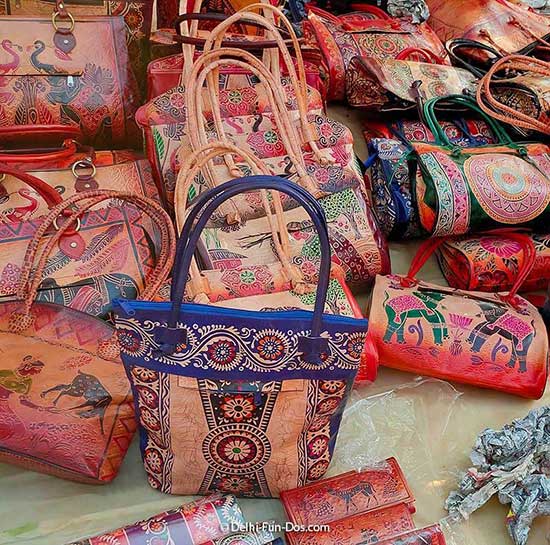
This is a private organization at Ballavpur Village some distance away from Shantiniketan. They train local villagers and develop amazing fabrics. In addition, batik art on leather is their specialty and they also sell dokra (lost wax casting) artifacts. The journey from Shantiniketan to Amar Kutir is most picturesque.
Khoaier Haat
This is an open-air flea market that is assembled in the Shonajhuri forests of Shantiniketan. The colourful stalls set the forest on fire. Santhal dance troupes perform to entertain visitors. Name an art form, and that would be available in this market at very reasonable prices. We already have a video on Khoaier Haat do check that out. Incidentally, this is essentially a weekend market.
What to eat in Shantiniketan?
Shantiniketan, to be upfront, is not known for any special food. There are a zillion hotels of all standards that serve all kinds of cuisine. We kept it simple here. For breakfast we would have luchi (Bengali version of poori) and potato curry, lunch would be a Bengali platter or thali with rice, dal, a vegetable dish, fish or chicken, chutney that is like a palette cleanser after a Bengali meal and curd. Dinner would be a little more adventurous..maybe a roadside kathi-roll or chowmein from the carts.
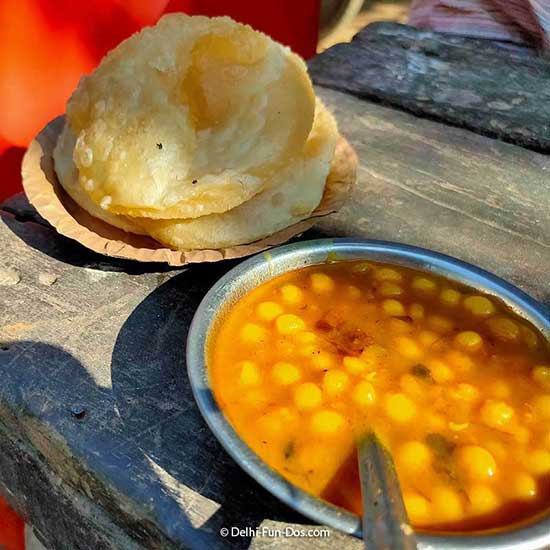
In between we would have countless cups of tea and biscuits, a staple in Bengal. Talking about tea, you can visit the renowned Kalor Dokaan in Ratan Pally, not far from the Visva-Bharati campus. The who’s who of the arts and intellectual worlds assemble here for tea and chit-chat. In fact, this chappie counts Nobel laureate Dr. Amartya Sen among his patrons.
What is the best time to visit Shantiniketan?

Summers are very hot in Shantiniketan so winters are undoubtedly the best time to be here. The period between October to February is very pleasant here and draws huge tourist footfall. But monsoons are beautiful against the verdant surroundings of Shantiniketan and make for a very idyllic setting.
Poush Mela in Shantiniketan
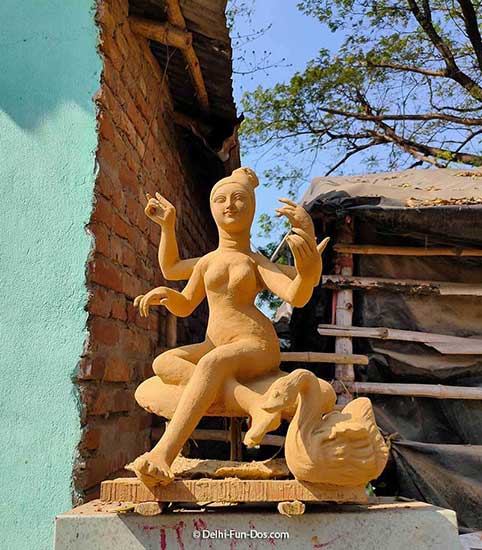
The annual winter festival held in the last week of December is a flurry of activities in Shantiniketan. It is a fusion of religious service along with folk performances and huge sales of handloom and handicrafts. One has to book months ahead for accommodation at this time.
Basanta Utsab in Shantiniketan
Holi is celebrated as Basanta Utsab or Spring Festival at Shantiniketan. The students of Visva-Bharati hold music and dance programs on the occasion that culminate in the sprinkling of dry colour powder or gulal. Travellers from all over the world come to experience this spectacle.
Places near Shantiniketan
Many people include Shantiniketan as a part of a trip to this part of Birbhum. One can visit the famous Kali Temple at Tarapith, another Shakti Peeth – Kankalitola, and the Bakreshwar dam – all within a few hours from Shantinektan. Further, as mentioned above, many beautiful resorts around Shantiniketan promise peace, quiet, serenity, and great food. If you want to avoid touristy things and go for slow travel, these places are ideal for you.
Is Shantiniketan worth visiting?
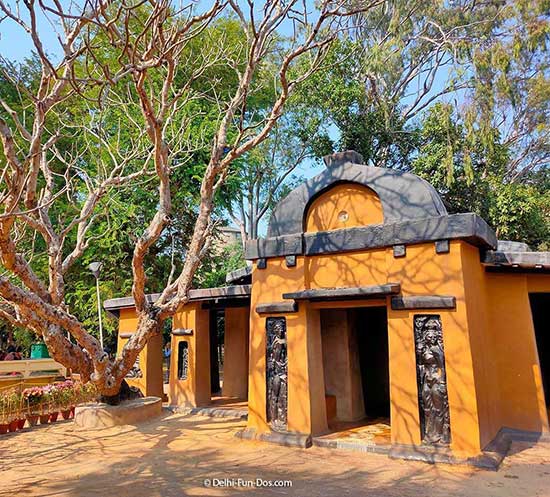
Shantiniketan is essentially Tagore’s philosophy in visual form. So if you are inclined towards art or history or philosophy, this place would work for you. Also, it is one of the most beautiful landscapes of Bengal. Painted mud houses of local Santhal tribes happily co-exist with concrete houses in this town. Santiniketan is a photographer’s delight. If you are here in the off-season, the peace here is almost tangible. There is something in the air and water here, that stokes our appetite. So, yes, Shantiniketan is indeed worth visiting. Don’t expect a lot of action here; just take it easy and be.

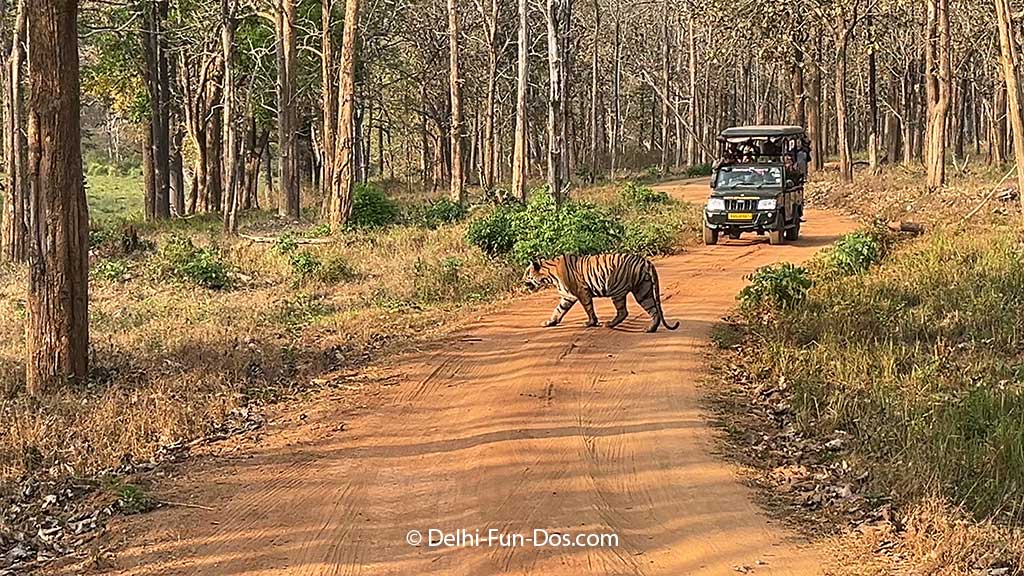
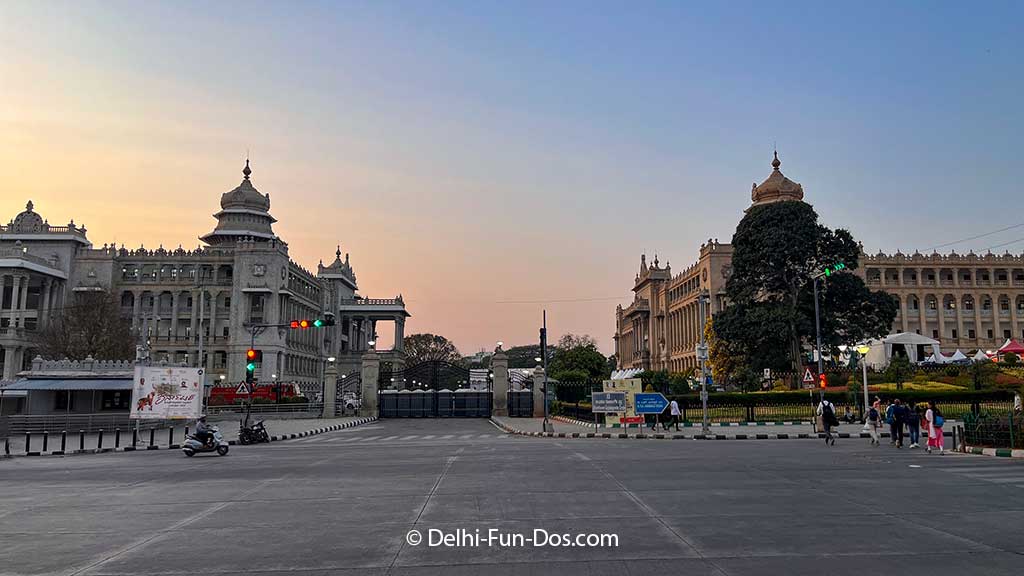
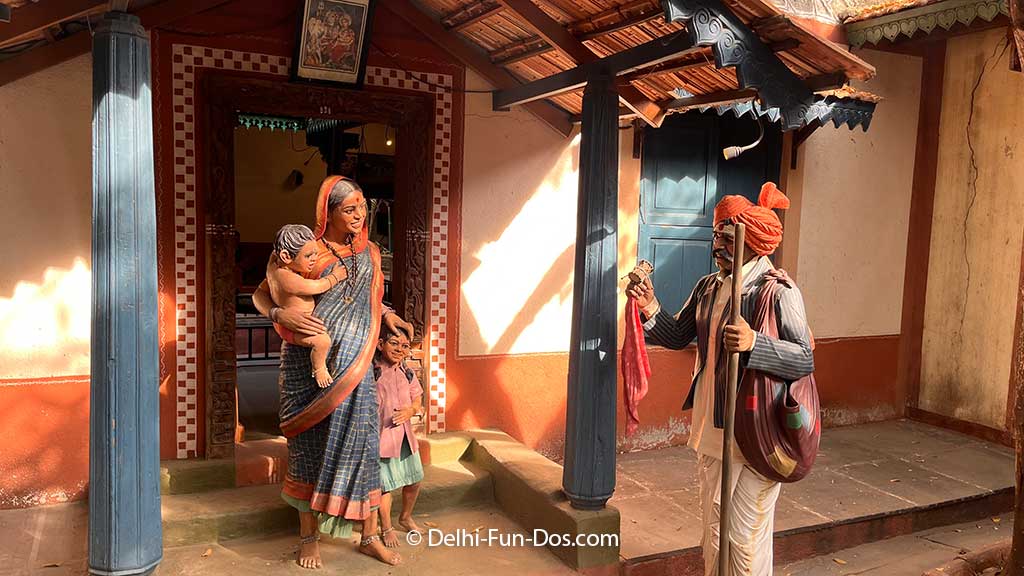
I loved how beautifully you have described Shantiniketan through pictures. I would love to visit someday. Kolkata has been on my bucket list this year.